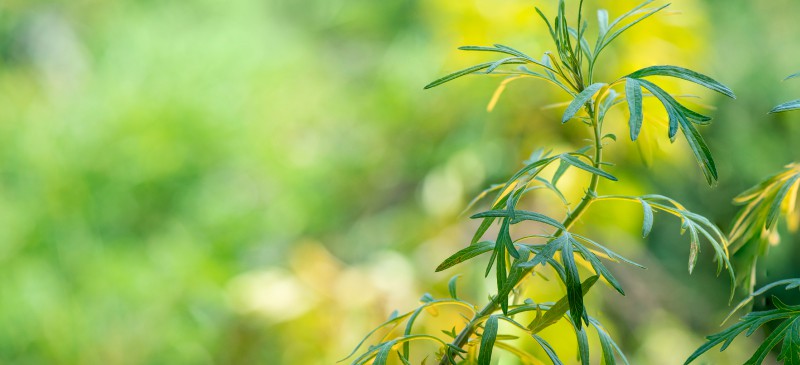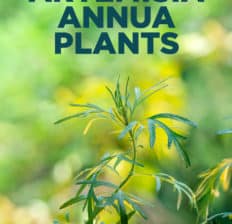This Dr. Axe content is medically reviewed or fact checked to ensure factually accurate information.
With strict editorial sourcing guidelines, we only link to academic research institutions, reputable media sites and, when research is available, medically peer-reviewed studies. Note that the numbers in parentheses (1, 2, etc.) are clickable links to these studies.
The information in our articles is NOT intended to replace a one-on-one relationship with a qualified health care professional and is not intended as medical advice.
This article is based on scientific evidence, written by experts and fact checked by our trained editorial staff. Note that the numbers in parentheses (1, 2, etc.) are clickable links to medically peer-reviewed studies.
Our team includes licensed nutritionists and dietitians, certified health education specialists, as well as certified strength and conditioning specialists, personal trainers and corrective exercise specialists. Our team aims to be not only thorough with its research, but also objective and unbiased.
The information in our articles is NOT intended to replace a one-on-one relationship with a qualified health care professional and is not intended as medical advice.
Do Artemisia Annua Benefits Outweigh the Potential Risks?
January 12, 2022

Artemisia annua — also known as qing hao, sweet sagewort, sweet Annie and annual wormwood — is an ancient herb that practitioners of Traditional Chinese Medicine have utilized for an estimated 5,000+ years.
Because it contains unique compounds such as artemisinin that have antiviral effects, it’s been used to naturally fight conditions including malaria. It also has the ability to treat fevers, inflammation, pain due to arthritis or headaches, and possibly other conditions.
Some researchers even believe that artemisia annua plant extracts and artemisinin derivatives may naturally help treat viruses, however at this time it isn’t widely used in this capacity as its efficacy is still being examined.
Although it has a track record of being mostly safe, artemisia products have became controversial in places such as the U.S. Some can now only be prescribed by registered medical practitioners.
Certain natural health practitioners view this “ban” as unnecessary considering that artemisia annua may be able to help people suffering from potentially severe viruses, infections and other issues.
What Is Artemisia Annua?
Artemisia annua is a plant that belongs to the plant family of Asteraceae (commonly known as the daisy family). Artemisia plants release aromatic odors and most have a spicy, bitter taste.
This plant is native to Asia and contains the active compound called artemisinin, which has been found to possess antimalarial, antiviral, antioxidant and anti-inflammatory properties. It also contains other beneficial sesquiterpene derivatives, such as arteether, artemether, artesunate and dihydroartemisinin.
Artemisia annua is related to other species in the artemisia family that have medicinal properties, such as Artemisia vulgaris or mugwort, and Artemisia absinthium, herbs primarily used to fight parasites.
The artemisia annua plant’s stems, leaves and flowers are used to make several types of medicines, including oral artesunate extracts (which are rich in the compound artemisinin) and topical ointments, as well as natural remedies, such as artemisia annua tea.
Although there’s a good deal of evidence that this plant has disease-fighting capabilities, its use remains controversial because it has the potential to cause side effects and even liver toxicity. According to Memorial Sloan Kettering, “More studies are needed to determine whether compounds from artemisia are safe and effective.”
Potential Benefits/Uses
What is artemisia annua used for? Aside from artemisinin, studies show that A. annua also contains many other antioxidants and phytochemicals, including:
- monoterpenes
- polyphenols
- coumarins
- flavones
- flavonols
- phenolic acids
- many sesquiterpenes
Here are the main uses and benefits associated with this plant and its derivatives:
1. Can Help Treat Malaria
Artemisinin-based combination therapies are commonly used with other drugs to treat malaria. Malaria is a disease caused by parasites (Plasmodium falciparum) that is spread through bites of infected mosquitoes.
Chinese scientist Tu Youyou was one of the first to demonstrate how this plant could fight malaria. He won the 2015 Nobel Prize in Physiology or Medicine for his research.
Systematic reviews have shown that treatments made with artemisia annua are typically as effective as the drug quinine for both uncomplicated and severe malaria.
According to the World Health Organization, a combination of riamet (Coartem), lumefantrine (120 mg) and artemether (an artemisinin derivative) given over two days is effective in treating malaria about 98 percent of the time.
That said, although WHO recommends artemisinin-based remedies for treating uncomplicated malaria, artemisinin resistance is becoming a growing concern. Because malaria is a serious and even deadly disease, patients need to be treated by a health care provider with artemisia-based drugs and should not self-treat for malaria.
Artemisia annua is also used in the treatment of other infections and illnesses, including leishmaniasis, Chagas disease and African sleeping sickness.
2. Can Reduce Inflammation and Arthritis Pain
Certain studies suggest that due to its anti-inflammatory effects, artemisia may be helpful for treating osteoarthritis symptoms, especially those affecting the knees and hips. It seems to safely help dull pain and stiffness and decrease physicals limitations for up to six months with ongoing treatment.
Researchers believe that dihydroartemisinin, a synthetic derivative of artemisinin, can help arthritis patients due to its ability to reduce inflammatory markers and pathways, including COX-2 production, serine/threonine kinase (AKT) and mitogen activated protein kinase (MAPK) pathways.
3. May Have Cancer-Fighting Effects Due to High Antioxidant Content
A number of reports indicate that A. annua is one of the four medicinal plants with the highest ORAC (oxygen radical absorbance capacity) levels, meaning it is very high in disease-fighting antioxidants. The high antioxidant activity of A. annua extract is most likely due to its high phenolic content, considering it has over 50 different phenolic compounds belonging to five major groups, including flavones and flavonols.
Artemisinin and other antioxidants found in artemisia, especially flavonoids, have been shown to induce apoptosis and have anti-proliferative effects against certain types pf cancers, including thyroid, colorectal and lung cancer. It’s thought this plant can help fight cancer due to its ability to decrease oxidative stress and free radical damage.
While this treatment seems promising, more studies are needed to determine which types of artemisia derivatives are safest and most effective in the treatment of cancer.
Risks and Side Effects
Case reports suggest that potential side effects of using artemisia annua may include:
- Liver damage
- Hepatitis
- Anemia
- Vertigo, hearing loss, ringing in the ears and dizziness
- Skin rashes, including dermatitis
- Digestive issues, such as abdominal pain, diarrhea, nausea and vomiting
Pregnant women and patients with diabetes, ulcers or gastrointestinal disorders should not take artemisia unless working with a doctor. It has the potential to cause fetal abnormalities and can interact with other medications, so use it with caution.
Some health authorities, including Medsafe (New Zealand Medicines and Medical Devices Safety Authority), have concerns over the use of artemisia-based products, especially “Arthrem.” There have been reports of Arthrem negatively affecting liver function and leading to hepatotoxicity.
If you plan to use it to help treat a medical problem, always be sure to work with a highly qualified and experienced natural health practitioner.
If you develop any of the following problems, stop taking Arthrem, and contact your doctor as soon as possible:
- nausea (feeling sick)
- stomach pain
- pale stools
- dark urine
- itching all over
- the whites of the eyes have turned yellow or the skin is yellow (jaundice)
Dosage
Artemisia annua is used to make a variety of formulations, depending on which condition is being treated. These include:
- Artemisinin (administered either intravenously, rectally or orally)
- Artesunate (intravenously, rectally or orally)
- Artelinate (orally)
- Dihydroartemisinin (orally)
- Artemether (intravenously, rectally or orally)
- Artemotil (intravenously)
- Artemisia annua tea (a traditional Chinese remedy) is also available, although some research has found that artemisinin is not soluble in water, and the concentrations in teas/infusions are insufficient to treat serious conditions like malaria.
Dosage recommendations vary based on the form being taken:
- For malaria treatment, WHO has approved riamet (Coartem), lumefantrine 120 mg combined with artemether 20 mg, administering four tablets initially, repeating dosage in eight hours and then taking twice daily for the next two days.
- For treatment of inflammation and osteoarthritis, 150 milligrams, twice per day, has been shown to be clinically relevant in pain reductions over the course of 12 weeks.
Conclusion
- Artemisia annua is a plant that has been used in Traditional Chinese Medicine for thousands of years. It’s been shown to have anti-malarial effects as well as cytotoxicity against cancer cells, along with antibacterial, antioxidant, anti-inflammatory and antifungal activities.
- One of the most researched artemisia annua benefits is treating malaria. Artemisinin-based combination therapies are recommended by the World Health Organization for treatment of uncomplicated malaria, usually in combination with other drugs.
- Some experts believe this plant may help treat viruses.
- Other uses for this plant extract, whether taken by mouth, intravenously or topically, include fighting some types of infections, fungi, inflammation, arthritis pains and some forms of cancer.




